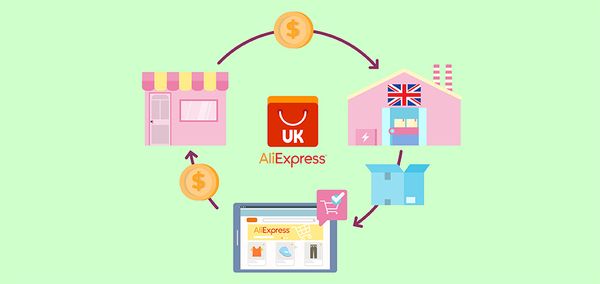E-commerce Fraud Prevention: How to Protect Your Business

E-commerce has revolutionized the way businesses and consumers interact, offering unparalleled convenience, accessibility, and opportunities for growth. However, the rise of online shopping has also led to a surge in e-commerce fraud, a significant challenge for businesses across the globe. Fraudsters are becoming increasingly sophisticated, targeting vulnerabilities in online systems to steal sensitive information, make unauthorized transactions, and commit other fraudulent activities. Protecting your business against fraudulent activities is essential to ensure long-term success.
What Is E-commerce Fraud Prevention
E-commerce fraud prevention encompasses the strategies and technologies employed to detect, mitigate, and prevent fraudulent activities in online transactions. This process involves monitoring customer behavior, verifying transaction details, and using advanced tools to identify unusual patterns. By integrating robust fraud prevention measures, businesses aim to protect their revenue streams, safeguard customer information, and maintain a secure shopping environment.
Fraud prevention is not limited to large enterprises. Small and medium-sized businesses (SMBs) are equally vulnerable, as they often lack the resources to imxplement sophisticated safeguards. E-commerce fraud prevention, therefore, plays a critical role in fostering a trustworthy ecosystem for businesses and their customers.
Reasons for E-commerce Fraud
E-commerce fraud is a significant concern for online businesses, and understanding the underlying reasons for such fraudulent activities is essential for preventing and mitigating risks. Fraudsters exploit various vulnerabilities in e-commerce systems to carry out illegal activities impacting businesses and customers. The reasons for e-commerce fraud can be categorized into several key areas: technological factors, human behavior, and systemic weaknesses.
1. Increasing Sophistication of Fraudsters
With the advancement of technology, fraudsters have developed increasingly sophisticated methods to bypass security measures. These criminals leverage tools such as malware, phishing, and automated bots to gain unauthorized access to user accounts, steal payment data, and make fraudulent purchases. They often target businesses with weak security protocols or outdated software, exploiting these vulnerabilities for financial gain. The continuous development of new tools and techniques makes it harder for businesses to keep up with emerging fraud tactics.
2. Growing Popularity of Online Shopping
As online shopping continues to grow in popularity, the volume of transactions has increased dramatically. This creates a larger target for fraudsters looking to exploit vulnerabilities. Online merchants are often faced with the challenge of managing millions of transactions daily, making it more difficult to manually verify each order for signs of fraud. With more consumers shopping online, there is a higher chance of fraud occurring, especially in regions or industries where security measures are less robust.
3. Lack of Robust Security Measures
Many e-commerce businesses, especially small or new ones, may lack the resources or knowledge to implement effective security measures. Without the necessary encryption, authentication, and fraud detection tools, these businesses are more vulnerable to cyber-attacks. Security measures like secure payment gateways, multi-factor authentication (MFA), and advanced fraud detection systems may not always be in place, allowing fraudsters to exploit gaps in the security infrastructure.
4. Use of Stolen Payment Information
Fraudsters often obtain stolen credit card information, either from data breaches, dark web markets, or phishing scams. With this stolen information, they can make fraudulent purchases on e-commerce sites. They may use techniques such as account takeovers to change shipping addresses, or they may employ card-not-present (CNP) fraud, which occurs when the actual physical card is not used during the transaction. This is especially common in online transactions where there is less scrutiny compared to in-person purchases.

|
Adapt Your Product Prices Automatically DSers Automatic Pricing - Pre-set Pricing Rule to mark-up your product price automatically |
5. Exploitation of Account Takeovers
Account takeover fraud occurs when a fraudster gains unauthorized access to a legitimate customer’s account. This typically happens when customers reuse passwords across multiple sites, and if one site is compromised, the fraudster can use the same credentials to access other accounts. Account takeovers are often used to make unauthorized purchases or change account details, including shipping addresses, to redirect goods to the fraudster's location.
6. Data Breaches and Cybersecurity Vulnerabilities
Data breaches are a common source of e-commerce fraud. When personal and payment data is exposed through a breach, fraudsters can use that information to carry out illegal activities. E-commerce businesses that do not implement adequate cybersecurity practices may suffer from data leaks, exposing sensitive customer information. Hackers can use this data for fraudulent transactions, identity theft, or selling it on the dark web.
Types of E-commerce Fraud
E-commerce fraud encompasses various malicious activities targeting online businesses and consumers. Recognizing key fraud types helps businesses adopt appropriate risk management measures and protect their operations.
1. Identity Theft
Identity theft involves the unauthorized use of personal information such as names, addresses, and payment details to make purchases. Fraudsters acquire this data through phishing, data breaches, or malware attacks, causing financial and reputational damage to businesses and consumers alike.
2. Chargeback Fraud (Friendly Fraud)
Chargeback fraud occurs when customers dispute legitimate transactions, claiming non-receipt of products or unauthorized charges. This type of fraud results in financial losses due to product costs, processing fees, and penalties imposed by payment processors.
3. Phishing and Spoofing
Phishing and spoofing scams involve fake websites, emails, or messages designed to steal sensitive information from consumers. Fraudsters trick individuals into disclosing login credentials, payment information, or personal details, jeopardizing both customer trust and business security.
4. Account Takeover Fraud
Account takeover fraud happens when cybercriminals gain access to customer accounts using stolen credentials. Fraudsters can place orders, alter shipping details, and access stored payment methods, leading to unauthorized purchases and potential data breaches.
5. Refund Fraud
Refund fraud exploits return policies by falsely claiming product defects or non-receipt of orders. Fraudsters may return counterfeit or damaged goods while keeping the genuine items, creating operational challenges and revenue losses for businesses.
6. Card Testing Fraud
Card testing fraud involves fraudsters using stolen credit card details for small transactions to verify card validity. If successful, they proceed with larger unauthorized purchases. Small test transactions are often difficult to detect, leading to significant cumulative losses.
7. Interception Fraud
Interception fraud takes place when fraudsters place orders using stolen credit card information while providing legitimate billing addresses. They manipulate shipping details by contacting delivery services to reroute packages, ensuring unauthorized receipt of goods.
Steps for Successful E-commerce Fraud Prevention
A robust fraud prevention strategy protects businesses from potential financial losses and builds customer trust. Nine essential steps contribute to a comprehensive fraud prevention framework, combining technology, policies, and continuous monitoring.
1. Conduct Regular Risk Assessments
Conducting regular risk assessments helps businesses identify vulnerabilities in their e-commerce infrastructure. These evaluations involve reviewing system configurations, data storage protocols, and third-party integrations. Security audits can uncover weak points, enabling businesses to implement timely upgrades and corrective actions. Risk assessments are most effective when performed after platform updates, major system changes, or data breaches to ensure continued protection.
2. Use Secure Payment Gateways
Secure payment gateways encrypt sensitive transaction details, ensuring safe data transfer between customers and businesses. Reputable gateways offer fraud detection features such as automatic transaction monitoring, suspicious activity alerts, and fraud scoring models. Choosing providers compliant with industry standards like PCI DSS adds another layer of protection by adhering to recognized data security protocols.
3. Implement Strong Authentication Measures
Authentication mechanisms such as two-factor authentication (2FA) and multi-factor authentication (MFA) strengthen user verification. These methods require customers to provide additional identity confirmation, such as one-time passwords (OTPs) or biometric scans. Advanced technologies like device fingerprinting and IP address tracking further enhance authentication by verifying user consistency across devices and locations.
4. Monitor Transactions Continuously
Continuous transaction monitoring involves using fraud detection tools that analyze customer behavior and flag unusual activities. Real-time monitoring systems compare transactions against historical data to detect anomalies such as large purchases, multiple orders within short timeframes, or transactions from high-risk regions. Suspicious activities trigger alerts, enabling businesses to investigate and respond promptly.
5. Use Address Verification Systems (AVS)
Address verification systems compare a customer’s billing address provided during checkout with the address registered with the card issuer. AVS helps identify mismatches that could indicate fraudulent activity. It is a common security measure offered by major payment processors and credit card companies, adding an extra verification step during online transactions. AVS reduces chargebacks resulting from unauthorized transactions.
6. Apply Card Verification Value (CVV) Checks
The CVV is a three- or four-digit code printed on credit and debit cards, used to verify cardholder authenticity. Requiring CVV entry during transactions ensures that customers possess the actual payment card. Fraudsters who obtain card numbers through data breaches or skimming devices often lack access to the corresponding CVV, making this security feature an effective deterrent against card-not-present (CNP) fraud.
7. Set Transaction Limits and Velocity Checks
Transaction limits and velocity checks help prevent fraud by limiting the number or value of transactions within a specific timeframe. Velocity checks detect repeated transactions from the same account, card, or IP address in rapid succession. Customizable rules allow businesses to adjust thresholds based on typical purchasing behavior, reducing the chances of card testing, bot attacks, and other automated fraud schemes.
8. Use Fraud Detection Tools and Machine Learning Models
Advanced fraud detection systems powered by machine learning analyze vast amounts of transactional data to detect emerging fraud patterns. These tools evaluate various indicators, including payment history, customer location, and device fingerprinting, to identify potential threats. Machine learning algorithms adapt continuously, improving accuracy by learning from new data. Businesses benefit from reduced false positives and better fraud prevention outcomes.
9. Protect Customer Data with Encryption
Encryption secures sensitive customer information, such as payment details and personal data, by converting it into unreadable code during transmission and storage. End-to-end encryption ensures that data remains protected from unauthorized access, even if intercepted during transfer. Secure Socket Layer (SSL) certificates, Transport Layer Security (TLS), and tokenization further strengthen data protection efforts, ensuring that customer information stays confidential and secure.
Conclusion
E-commerce fraud presents a significant challenge for businesses operating in the digital marketplace. By understanding the causes and types of fraud, businesses can develop tailored strategies to protect their operations and customers. Investing in robust fraud prevention measures, leveraging advanced technologies, and fostering a culture of awareness are essential steps toward mitigating risks. As the e-commerce landscape continues to evolve, staying vigilant and proactive will ensure businesses maintain their competitive edge and build lasting trust with their customers.
Need more information about dropshipping? Explore DSers now.











 Company
Company
 Why Choose DSers
Why Choose DSers
 Blog
Blog
 Help Center
Help Center




 Live Chat
Live Chat